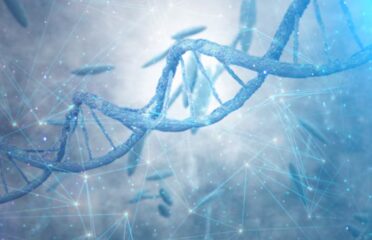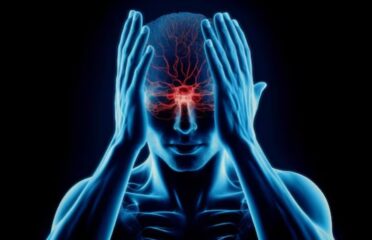Angelman Syndrome
Overview of Angelman Syndrome

Angelman syndrome, a genetic disorder, leads to delayed development, speech and balance issues, intellectual disability, and occational seizures.
Individuals with this syndrome often display frequent smiling, laughter, and a happy, excitable demeanor. Developmental delays, emerging around 6 to 12 months, typically mark the initial symptoms, while seizures may commence between 2 and 3 years.
Although those with Angelman syndrome generally live a near-normal lifespan, there is no cure for the disorder.
Treatment concentrates on addressing medical, sleep, and developmental concerns to enhance the overall well-being of individuals affected by Angelman syndrome.
Angelman Syndrome Symptoms
• Angelman syndrome manifests through developmental delays, such as delayed crawling or babbling by 6 to 12 months.
• Individuals typically exhibit intellectual disability and may have minimal or absent speech.
• Challenges with walking or balancing are standard features of Angelman syndrome.
• Affected individuals often display frequent smiling, laughter, and a generally happy and excitable personality.
• Feeding difficulties are observed in individuals with Angelman syndrome.
• Sleep-related issues are also prevalent among those with Angelman syndrome.
Causes & Risks
• Angelman syndrome, associated with chromosome 15's UBE3A gene, often arises from issues in the maternal copy.
• Typically, only the maternal UBE3A gene is active in the brain, and missing or damaged parts of this copy contribute to Angelman syndrome.
• In rare cases, inheriting two paternal gene copies can also result in the syndrome.
• Angelman syndrome is rare, and its precise genetic origins are often unknown.
• While the exact causes of these genetic changes remain uncertain, Angelman syndrome is usually not hereditary.
• However, occasional instances involve inheritance, especially with a family history, elevating the baby's risk of the syndrome.
Test & Diagnosis
• A conclusive diagnosis of Angelman syndrome is usually attainable through a blood test, specifically genetic testing.
• Various tests, including DNA methylation, assess parental DNA patterns to identify three of the four known genetic abnormalities causing Angelman syndrome.
• Chromosomal microarray (CMA) detects missing chromosome portions.
• In rare cases, a mutated maternal copy of the UBE3A gene can cause Angelman syndrome, identified through UBE3A gene sequencing if the DNA methylation test yields normal results.
• This comprehensive genetic testing approach enables the detection of chromosomal defects associated with Angelman syndrome, facilitating an accurate diagnosis.
Angelman Syndrome Treatment
Treatment for Angelman syndrome encompasses various approaches:
• Behavioral Therapies: Techniques like applied behavior analysis (ABA), speech therapy, occupational therapy, and physical therapy target behavioral challenges, improve communication, and enhance motor function.
• Medications: Prescription drugs address specific symptoms. Antiepileptic drugs manage seizures, sleep aids address sleep disturbances, and medications are used to manage hyperactivity.
• Communication Support: Individuals with limited verbal skills benefit from augmentative and alternative communication (AAC) devices, picture exchange communication systems (PECS), or sign language.
• Seizure Management: Given the common occurrence of seizures, medications and careful management are essential to control and reduce their frequency and severity.
• Physical and Occupational Therapy: These therapies aim to improve motor skills, coordination, and foster independence in daily activities for individuals with Angelman syndrome.
Living With
Living with Angelman syndrome involves providing supportive care, access to therapies, and tailored interventions to address the unique needs of each individual.
Families often play a crucial role in ensuring their loved one's well-being by:
Accessing specialized therapies and educational programs to support learning and development.
Establishing a structured routine and utilizing visual aids to enhance understanding and communication.
Collaborating with healthcare professionals, therapists, and educators to create individualized care plans.
Providing a nurturing and supportive environment that encourages independence and social interactions.
Complications
Angelman syndrome complications encompass:
• Feeding Difficulties: Infants may struggle with sucking and swallowing, necessitating a high-calorie formula for weight gain.
• Hyperactivity: Children exhibit rapid activity shifts, short attention spans, and may engage in mouthing objects. Hyperactivity diminishes with age, typically without medication.
• Sleep Disorders: Abnormal sleep-wake patterns and reduced sleep needs are common. Age may improve sleep issues, managed by medication or behavior therapy.
• Scoliosis: Some develop a side-to-side spinal curvature over time.
• Obesity: Older children often have substantial appetites, potentially leading to obesity.

The Content is not intended to be a substitute for professional medical advice, diagnosis, or treatment. Always seek the advice of your physician or other qualified health provider with any questions you may have regarding a medical condition.
Know more about
Our Healthcare Planner
Three fundamental values we can assure you:
1. Personalized Healthcare.
2. Most advanced robotic therapies
3. Transparent pricing





